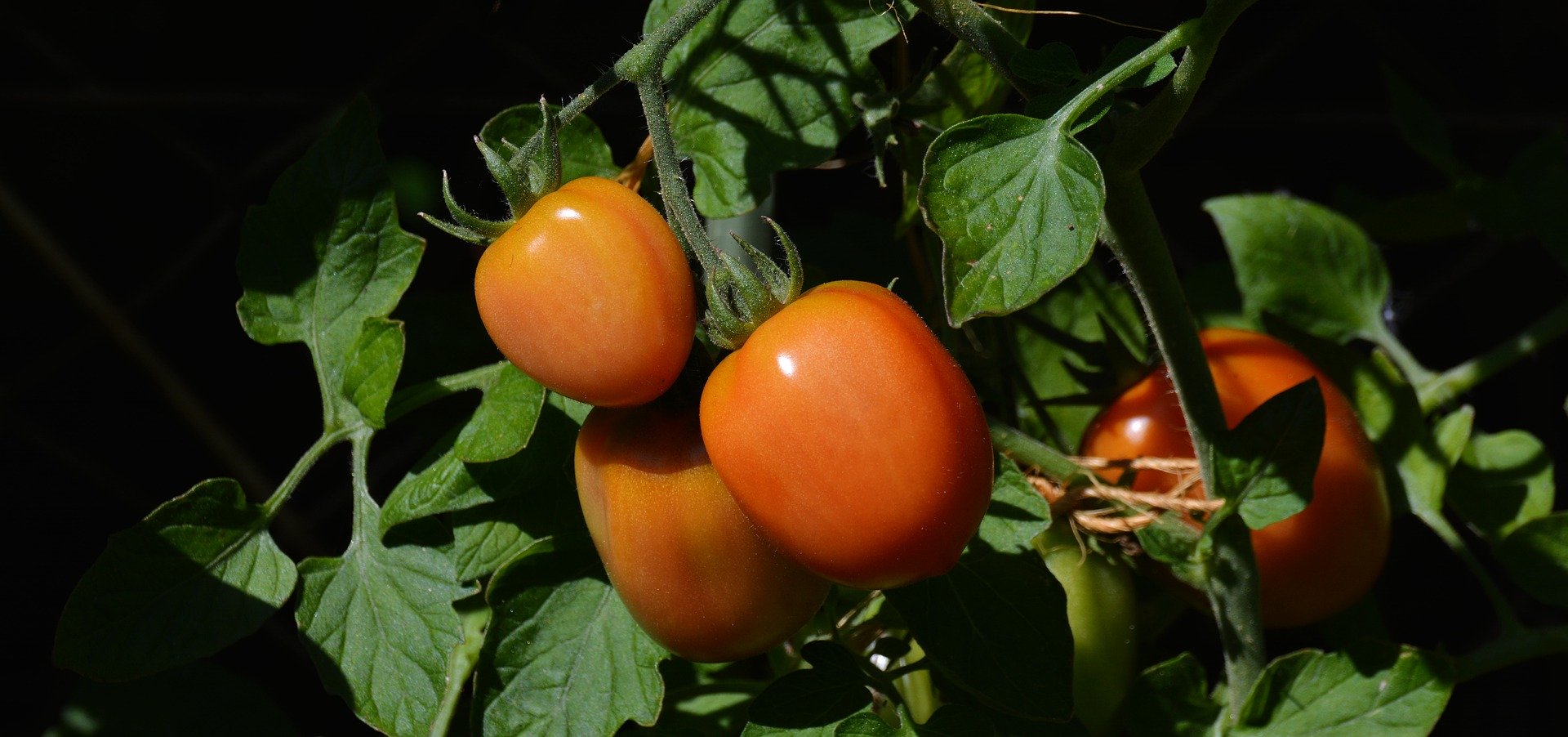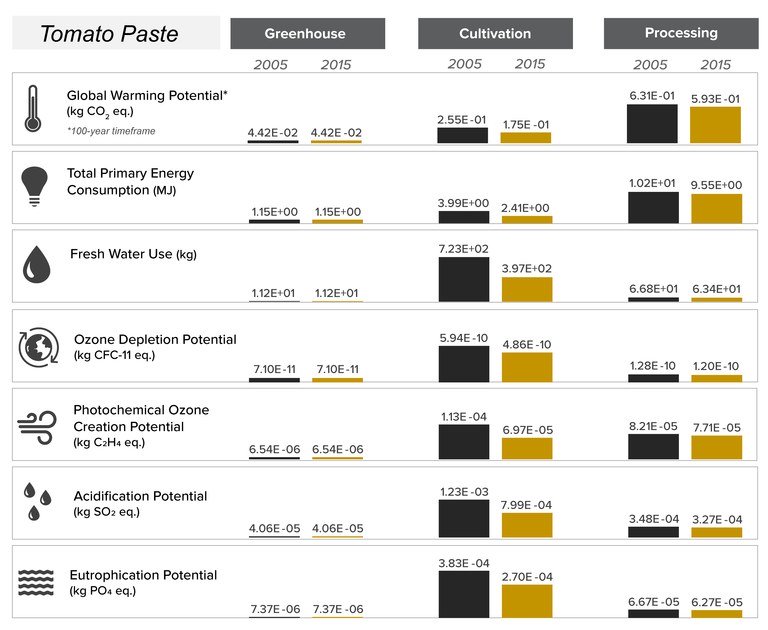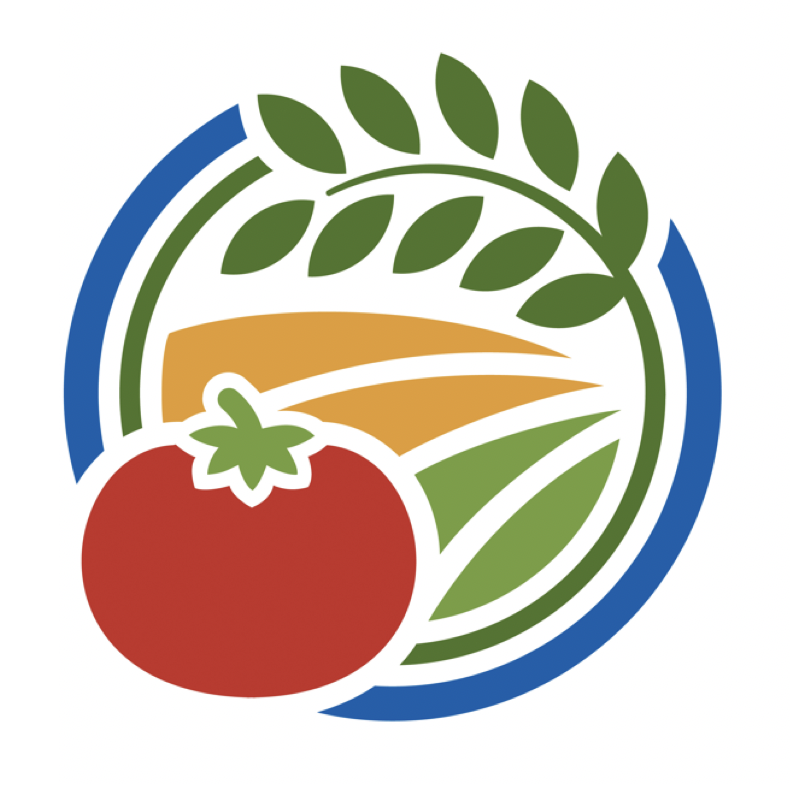
What is life cycle assessment?
Life Cycle Assessment (LCA) is a comprehensive analysis method for assessing the environmental impacts and resources used throughout the full life cycle of a given product or system. LCAs consider environmental impacts at each phase of the life cycle (raw material production, manufacturing, use, etc.)
Study goals
The goals of this study were:
- to quantify resource use and a range of environmental impacts of producing tomato paste and diced tomatoes in California
- to assess change in the industry over approximately 1 decade (2005 – 2015)
What was included in the study?
Our study quantified resource use, including energy, water, and other resources, and estimates emissions that may contribute to critical environmental impacts, including global warming, ozone depletion, photochemical ozone creation, acidification, and eutrophication, for bulk tomato paste and diced tomatoes.
It included the following phases of tomato production and processing:
- Greenhouse production of transplants
- Field cultivation of tomatoes
- Facility processing
This analysis ended at the facility gate. It included transportation of transplants and tomatoes between phases, but it did not include packaging of final products. Researchers collected data from all three phases for both the 2005 season and the 2015 season, to track changes over time.
Environmental impacts included in study:
- Global Warming Potential: a measure of how much energy the emission of 1 ton of gas will absorb over a given time period (usually 100 years) relative to how much energy 1 ton of carbon dioxide (CO2) will absorb.
- Ozone Layer Depletion Potential: a measure of the potential of airborne emissions to degrade the stratospheric ozone layer, relative to trichlorofluoromethane (CFC-11).
- Photochemical Ozone Creation Potential: a measure of the ozone-forming potential of airborne emissions, relative to ethylene (C2H4).
- Acidification Potential: a measure of the acid-forming potential of a substance emitted into the environment, relative to the acid-forming potential of sulfur dioxide (SO2).
- Eutrophication Potential: a measure of the quantity of human-induced additions of nutrients (phosphorus and nitrogen) to the environment, that can cause excessive aquatic plant and algae growth, expressed in units of phosphate (PO4) equivalents.
- Toxicity potential for humans and for marine, terrestrial and freshwater ecosystems: a measure of the toxicity of chemicals released into the environment, relative to 1,4-dichlorobenzene (1.4-DCB), a chemical commonly used in mothballs, fumigants, and other products.
Key findings
Environmental improvements in California tomatoes (2005 to 2015)
Between 2005 and 2015, environmental improvements were observed in both final paste and diced tomato products. Efficiency of energy use and water use increased substantially over this time period, calculated per kg of final paste and diced product.
Over the total 3-phase life cycle, the following efficiencies were observed:
Efficiency |
Main findings |
|---|---|
ENERGY USE |
|
WATER USE |
|
YIELDS |
|
ENVIRONMENTALIMPACTS |
|
 |
|---|
 |
Caveats: Considerations of increases in California processed tomato efficiency must be balanced with consideration of the total magnitude of impacts of the industry in California and elsewhere where inputs are produced. The total acreage of processing tomatoes increased by 12 percent between 2005 and 2015, and total harvested output increased by over 40 percent, requiring more total harvest and processing activity. In addition, per acre applications of certain inputs, including fertilizers and some pesticides, increased from 2005 to 2015.
Largest sources of environmental impacts
Across the three phases of the supply chain, the following factors make the largest contributions to the range of environmental impacts measured:
- Diesel production and combustion
- Natural gas production and combustion
- Irrigation water pumping and use
Largest contributors to environmental impacts for each phase |
|
|---|---|
|
Greenhouse |
|
Cultivation |
|
Processing |
|
Notably, grid electricity production, for uses across the supply chain, accounts for a significant amount of water use.
Production of pesticide active ingredients does not account for notably large impacts compared to other factors, but post-application impacts are not assessed here, due to data limitations.
Ways to improve the environmental performance of processed tomatoes
- Invest in renewable energy generation at all three phases (greenhouse, cultivation and processing)
- Consider alternatives to vermiculite
-
Choose less toxic herbicides and pesticides and use Integrated Pest Management
-
Monitor crop nitrogen needs and use precision application methods to prevent over-application of fertilizers
-
Choose lower-GWP nitrogen fertilizers, such as urea-based products (UN32), over calcium ammonium nitrate (CAN17)
-
Invest in more energy-efficient irrigation pumps
Uncertainty and needs for further research
|
|---|
